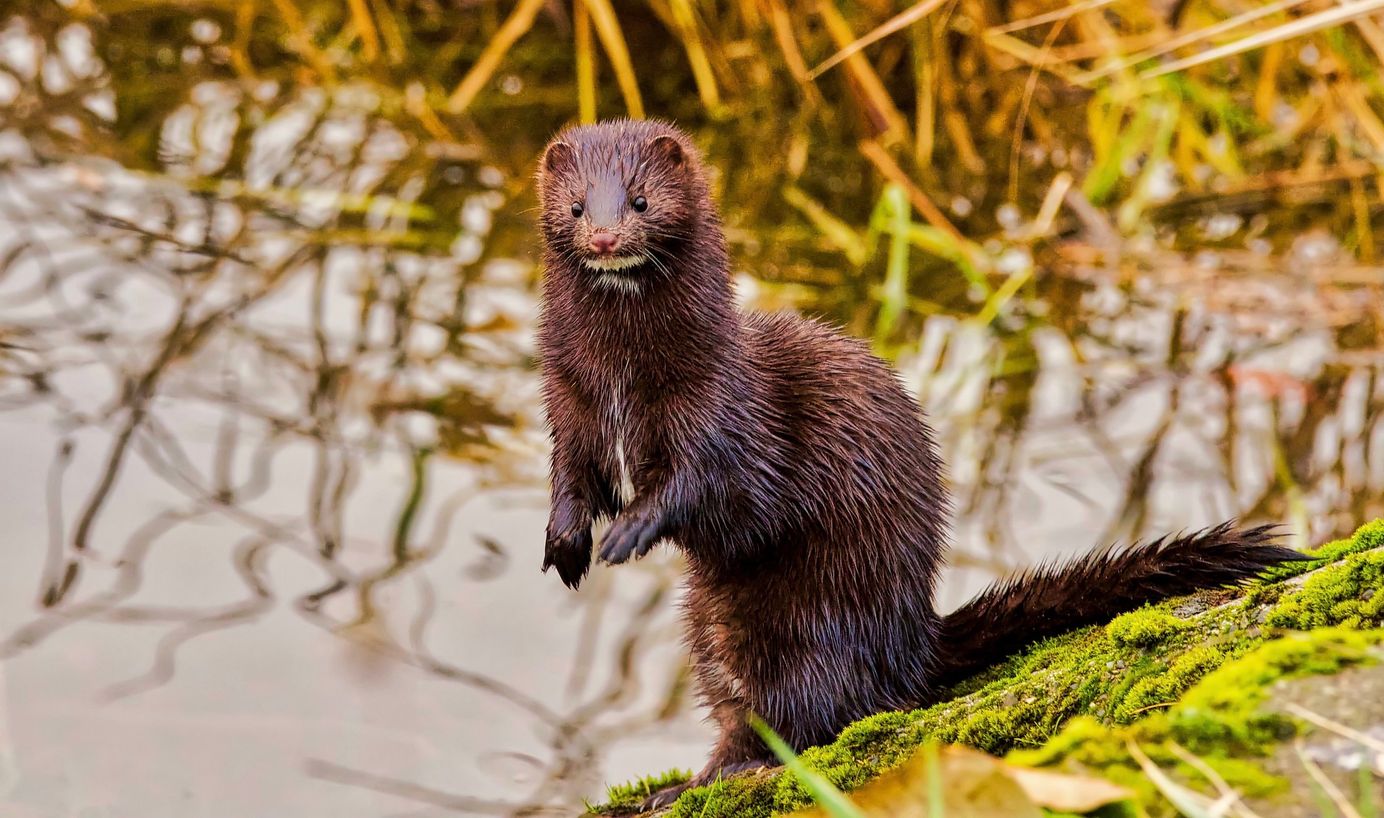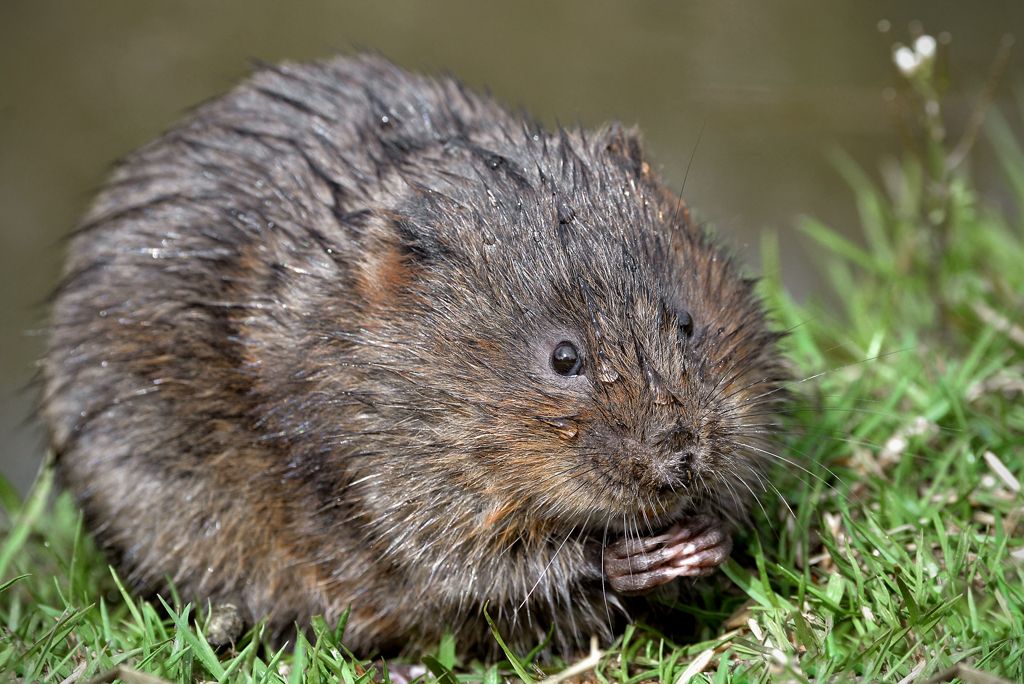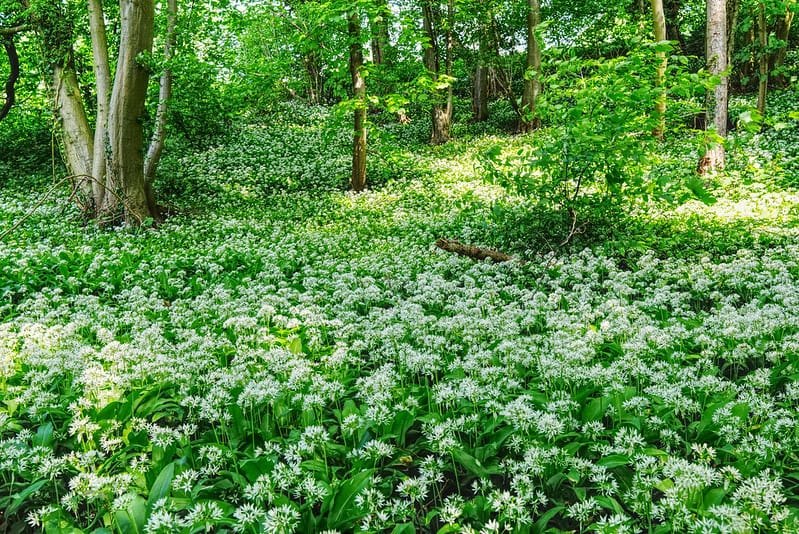
Can American mink be eradicated from Britain?
A trapping project in the East of England has the potential to eradicate invasive mink from the whole region, and perhaps beyond.
Scent harvested from the anal glands of dead mink may not be the most glamorous substance, but it is proving a secret weapon in a project to bring endangered water voles back from the brink.
Anal gland lure is the scent that mink put on their faeces as a means of alerting other mink to their presence and informing them of their reproductive status, explains Tony Martin, chair of Waterlife Recovery East, a charity set up with the aim of eradicating mink from East Anglia.
“This gunk is foul-smelling – it’s absolutely amazing. None of us have caught COVID because it is the best social isolator that you could possibly imagine. No-one wants to come within two metres of you,” he jokes. Repulsive to humans it may be, the scent lure “works magic” in attracting mink to Martin’s traps. “Any mink passing within 50 metres is drawn in,” he says.
Martin, an emeritus professor of animal conservation at Dundee University, has plenty of experience in unwanted beasts. His previous achievements include the eradication of invasive mice and rats from South Georgia, which were preying on the island’s globally important seabird colony, a project that earned him the title of Conservationist of the Year from the Zoological Society of London in 2016.
His latest endeavour, however, is closer to home. American mink were introduced to Britain in 1929 for fur farming, but soon spread nationwide. The mammals prey on kingfishers, sand martins and water voles. Populations of the latter have crashed by around 96 percent since 1950, according to Defra, and mink predation has been largely to blame.
There have been many attempts to control American mink populations by trapping, but most have been ineffective: when the work stops, the mink return.
But Martin’s project, now in its third year, has two key differences. One is the anal scent lure, which has only been fully deployed in mink traps in the past seven months, but has already improved their success rate.
The other is the use of ‘smart’ traps. Typical mink trapping programmes use live-capture cages to avoid killing other wildlife. But these traps have to be checked daily to make sure that no animal – mink or otherwise – is trapped for too long, a time-consuming task for volunteers.
Martin’s traps have electronic monitors which send a text message to trappers within two minutes of the door closing. They can then go straight to the trap knowing that it has caught something. If it is not mink, it is freed; if it is mink, the animal is killed and the carcass examined for data to inform the project. This has cut down on trap visits by 98 percent, according to Martin, also saving petrol in the process.
The project has already demonstrated significant success. From a starting point of around 5-10,000 mink in East Anglia, Martin estimates that just 1,000 remain, and possibly fewer than 500. Recent indications are that there are now fewer than 100 male mink remaining in Norfolk, where trapping has been taking place the longest. Though, as with any eradication project, he suspects that the final 1-2 percent will be the hardest to remove.
Though Martin suspects the number of surviving females is higher, they are being forced to travel to find mates instead of waiting in one place for a suitor to find them. Once mink populations reach a very low size, their rate of reproduction declines: “I suspect we’ll find that the reproductive rates in females will actually drop quite quickly,” he says.
Genetic analysis, too, shows a shrinking population – captured mink are increasingly likely to be first-degree relatives as numbers dwindle.
In response, water vole populations are booming. “They’re coming back in plague proportions in some places. It’s embarrassing – we’re catching more water voles than mink,” says Martin. The team has consequently had to invent an extra feature to exclude voles from the traps.

The removal of mink is having indirect benefits for other species. At the RSPB’s Lakenheath reserve in Suffolk, the number of mink has fallen significantly, according to site manager David Rogers. Though there is no data on water voles specifically, Rogers has noticed an increase in bird species such as bitterns in the past two or three years, which he believes could be linked to the mink’s decline.
But the main benefit is a massive reduction in staff resources spent on trapping mink. “We can use the time instead for other tasks such as managing habitats, so removing mink has a huge benefit for other species on the reserve,” he says.
There is potential for the project to be scaled up to other regions, and even the whole country, Martin believes. News of the project’s success has spread, and he has been contacted by conservation groups all over Britain, including Northumberland, Yorkshire, Sussex, Shropshire and Scotland.
Natural England has been in touch with Martin’s team about its planned water vole conservation strategy for East Anglia. “The scale and targeting of mink control will be set out in the strategy, which will be drafted later this year,” a spokesman said.
Martin is optimistic that his project will succeed where others have failed. “When I started this, eradication looked theoretically possible. But most eradications of invasive species fail, and I wouldn’t have been surprised if we encountered something along the way which meant that it didn’t work.”
Martin estimates that mink eradication within a particular region would take around five years if resourced properly. While eradication from the whole of Britain could cost tens of millions of pounds, he believes this would ultimately be far cheaper than continuing with piecemeal efforts towards control.
Significantly, the project shows that populations of water voles have the capacity to increase rapidly in the absence of the mink, even without the reintroductions of farmed animals, such as those bred by rewilder Derek Gow.
Today releasing the 30,000th water vole we have bred into a superb wetland rim at Trentham Water Gardens near Stafford. Lots of nice folk enthusiastically helping. The Wildlife Trust reckon that the population of 200 plus going out is nearly as many as survive elsewhere in staffs pic.twitter.com/HMgkZllpmt
— Derek Gow (@gow_derek) June 13, 2022
“Reintroductions are sexy in Britain at the moment, but personally, I’m rather reticent, unless a species has been completely wiped out and cannot recover by itself,” adds Martin. “Water voles are at a very low ebb in most places, but there are still pockets. If you remove mink, they recover and spread very, very quickly.”
In early May, Martin received an alert from a trap in the Great Ouse – outside the project’s core area – revealing the first water vole in the area for “years and years”. “As hard and sometimes unpleasant as this work is, it’s producing fantastic results. It’s like a furry phoenix rising from the ashes!”
Inkcap Journal depends on readers like you to fund our journalism. Subscribe now to become a member – you'll be helping to provide the regular support that we desperately need, and will also receive our weekly digest of nature news. Alternatively, you can help us out by making a one-off donation through our Ko-fi page.
Subscribe to our newsletter
Members receive our premium weekly digest of nature news from across Britain.
Comments
Sign in or become a Inkcap Journal member to join the conversation.
Just enter your email below to get a log in link.








